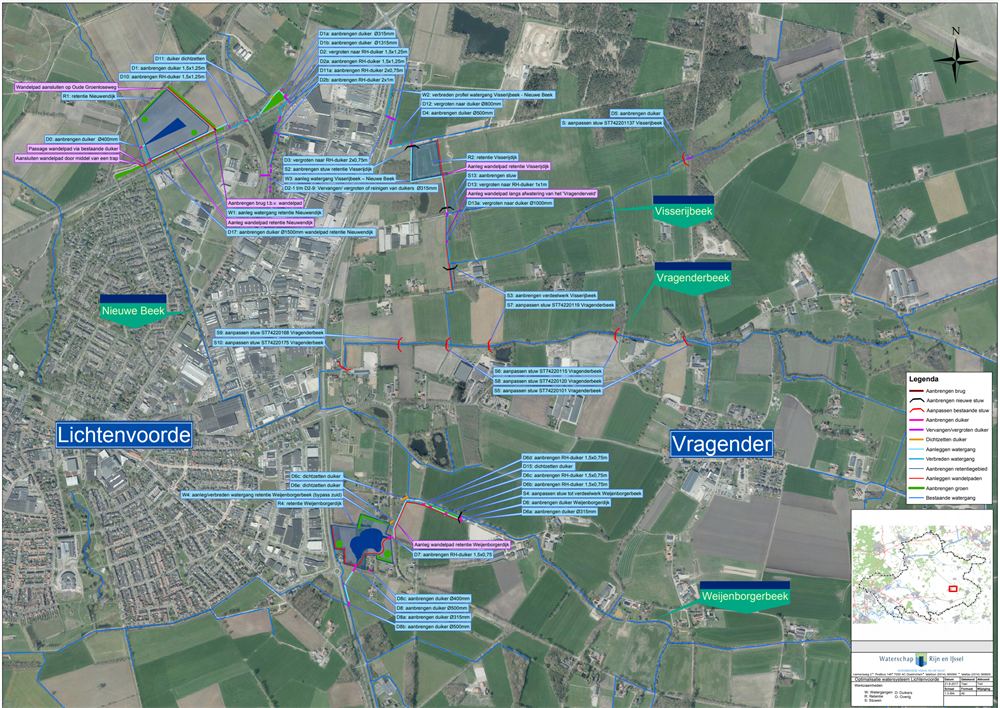Optimisation of Lichtenvoorde water system
The Baakse Beek basin is affected by both drought and waterlogging. With a view to climate change, climate measures must be implemented in this basin in order to achieve a more stable, future-proof water system with smaller peak discharges. This project involves the realisation of 13 hectares of water storage in the Baakse Beek headwater area and the optimisation of the water system around Lichtenvoorde. Optimisation will reduce peak discharges and the risk of waterlogging, whilst retaining water in the Baakse Beek basin for a longer period of time.
The Baakse Beek is fed from the Weijenborgerbeek, Vragenderbeek, and Visserijbeek terraced brooks. These brooks discharge water from the farmlands on the East-Gelderland plateau featuring shallow boulder clay strata. During severe precipitation, rainwater crashes some 15 metres down via the terraced brooks to the Baakse Beek, resulting in high peak discharges. The large volumes of water periodically cause waterlogging on farmland located along the brooks in the headway area and in the Lichtenvoorde town centre. Controlling the peak discharges requires room for water storage and optimisation of the water system.
This project involves the following climate-proofing measures, to be implemented from East to West:
- Adaptation of the Visserijbeek and Vragenderbeek weirs to slow the water flow down and increase the water retention capacity of the weirs during periods of drought;
- Realisation of retention areas;
- Adaptation of water management, involving the construction of a new drainage canal north of Lichtenvoorde to direct a proportion of the water from the terraced brooks to the Baakse Beek.
 Map of Lichtenvoorde water system optimisation project
Map of Lichtenvoorde water system optimisation project
Water storage in this area is most efficient at the locations at which the terraced brooks flatten out. Here, the water storage capacity per hectare exceeds that of sloping areas. However, the location at which the brooks flatten out also accommodates the Lichtenvoorde town centre. Water retention, water storage, and retarded discharge into the retention areas will keep water in the headway area for a longer period of time, thus prolonging the discharging function of the Baakse Beek. The reduction of peak discharges from the farmlands at the plateau will cut back wet damage to crops and waterlogging in the Lichtenvoorde town centre.
Lessons learned from the project
The parties are taking responsibility for reducing the future impact of critical issues such as waterlogging and wet damage by implementing technical measures. In parallel, a more comprehensive dialogue with local stakeholders is being conducted under the Klimaat Klaor pilot project, about ways in which residents, entrepreneurs, and organisations can collectively contribute to creating a more resilient area and expanding the sponge action of the area.
